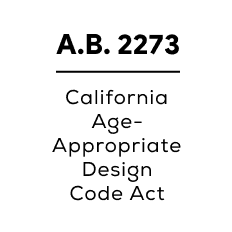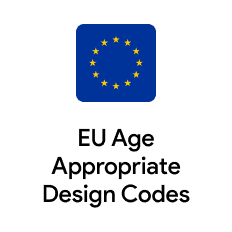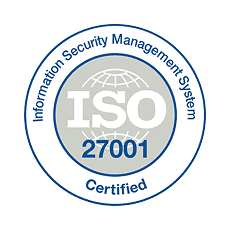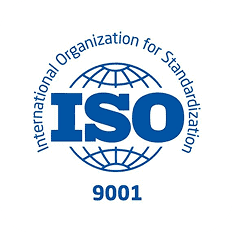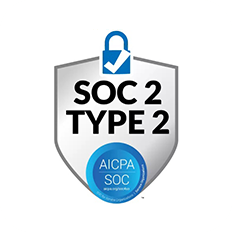Introduction
PrivateID is built for seamless, interoperable identity authentication with complete privacy at its core. Its edge-based architecture and patented tokenization ensure biometric data never leaves the device, enabling scalable, compliant, and frictionless authentication across industries.
Paravision, known for accuracy in facial recognition benchmarks, focuses heavily on government, aviation, and security workflows. Its reliance on traditional biometric processing means biometric data must be transmitted and stored, creating privacy, scalability, and interoperability challenges that limit its suitability for enterprise and consumer identity authentication.
1. Architecture
PrivateID: Performs 1:1 biometric matching directly at the device edge. Biometric data and PII remain securely on the device, preserving privacy while eliminating breach risks and simplifying global compliance.
Paravision: Operates through server-based/cloud infrastructure. Biometric images and templates must be transmitted and stored for matching, increasing exposure risks.
2. Privacy & Tokenization
PrivateID: Uses patented Homomorphic Tokenization, transforming biometrics into irreversible, anonymized tokens. Tokens are unique, cannot be reverse-engineered, IEEE 2410 compliant, and exempt from GDPR, CCPA, HIPAA, and BIPA obligations. No biometric data is ever transmitted.
Paravision: Relies on traditional template-based recognition. Templates/images remain linkable and subject to exposure, increasing regulatory obligations and breach risks.
3. 1:1 vs 1:N Matching
PrivateID:
•1:1: Edge-only processing, no network transmission, no images ever leave the device.
•1:N: Only anonymized tokens are transmitted for matching. Enables scalable, privacy-preserving searches with ~5ms constant lookups, regardless of gallery size.
Paravision: Traditional biometric searches rely on image/templates. Accuracy and efficiency diminish at scale, with costs and latency increasing as gallery size grows.
4. Multi-Modal Biometrics
PrivateID: Supports facial, voice, fingerprint, and palm biometrics combined with Passkeys and identity signals (geolocation, Wi-Fi sniffing, device fingerprinting) for secure, risk-based authentication (RBA) across any camera- or microphone-enabled device.
Paravision: Strong focus on facial recognition, with expanding capabilities in video analytics and surveillance contexts. Limited support for broader multimodal biometrics in enterprise authentication workflows.
5. Liveness Detection (PAD)
PrivateID: On-device advanced anti-spoofing against photos, masks, and deepfakes, performed without transmitting data, preserving privacy and reducing regulatory risks.
Paravision: Offers PAD and anti-spoofing but requires data transmission for processing, expanding attack surfaces and compliance exposure.
6. Scalability & Efficiency
PrivateID: Unlimited scalability with consistent performance. Converts a 5MB image into a ~1KB token, minimizing bandwidth and compute costs. Delivers constant performance (~5ms) regardless of gallery size.
Paravision: Scaling requires increased compute/storage infrastructure. As galleries grow, latency increases and efficiency declines.
7. Accuracy
PrivateID: Delivers 99.999% accuracy across unlimited gallery sizes, while tokenization mitigates bias amplification.
Paravision: Recognized as a top performer in NIST FRVT accuracy benchmarks. However, accuracy can diminish in very large gallery deployments due to reliance on traditional template storage and processing.
8. Compliance & Security
PrivateID: On-device and tokenized architecture ensures inherent compliance with GDPR, CCPA, HIPAA, and BIPA. Annually certified to IEEE 2410 for biometric processing. No biometric data is ever stored or transmitted.
Paravision: Compliance responsibilities are customer-managed. Biometric data must be transmitted and stored, raising privacy, security, and regulatory exposure risks.
9. Deployment & Integration
PrivateID: Lightweight SDK/API enables rapid deployment across IAM, healthcare, retail, and finance. Runs on standard devices including desktops, mobiles, and POS terminals.
Paravision: Deployment typically requires server/cloud infrastructure to manage biometric databases, adding complexity and integration overhead.
10. Ethics & Trust
PrivateID: Purpose-built for user-consented, privacy-preserving authentication across enterprise and consumer use cases.
Paravision: Strong market presence in government, defense, and surveillance, raising civil liberty and privacy concerns in some deployments.
11. Cost & Total Cost of Ownership (TCO)
PrivateID: Edge processing and tokenization reduce compute, storage, and bandwidth costs by orders of magnitude. Minimal infrastructure lowers long-term TCO.
Paravision: Infrastructure-heavy deployments drive costs upward as gallery sizes expand. Total costs scale with compute and storage requirements.
12. Latency & User Experience
PrivateID: Delivers real-time performance (~100ms) regardless of scale, optimizing seamless authentication experiences.
Paravision: Dependent on network and server load. Latency increases as gallery size grows, potentially impacting user experience in high-volume scenarios.
13. Deployment Flexibility
PrivateID: Fully edge-capable for 1:1, hybrid edge-to-server for 1:N tokenized matching. Works across cloud, on-prem, and hybrid environments without lock-in.
Paravision: Primarily designed for cloud/server-side deployments. Limited flexibility for pure edge-based use cases.
14. Ecosystem & Interoperability
PrivateID: Standards-based interoperability (IEEE 2410, FIDO2) with IAM, MFA, Passkeys, and RBA systems across industries.
Paravision: Focused ecosystem around security, surveillance, and facial recognition. Less integration breadth with enterprise IAM standards.
15. Bias & Fairness
PrivateID: Tokenization removes demographic markers from biometric data, reducing bias and improving fairness across populations.
Paravision: While high in accuracy, reliance on datasets and template-based recognition may introduce demographic bias, as noted in industry-wide testing.
16. Business & Market Positioning
PrivateID: Positioned for enterprises, healthcare, finance, and retail requiring privacy-first, compliant, and scalable biometric identity solutions.
Paravision: Strong positioning in government, defense, and security markets. Enterprise adoption is limited by privacy and compliance tradeoffs.
Summary
PrivateID is a privacy-first biometric platform built for modern enterprise and consumer identity authentication. By performing 1:1 at the edge and 1:N through patented tokenization, it ensures biometric data never leaves the device, delivers unlimited scalability, constant performance, multi-modal support, and inherent compliance with global privacy laws — all at lower cost.
Paravision, though highly accurate and ranked strongly in NIST benchmarks, remains a traditional template-based solution dependent on transmitting and storing biometric data. Its strengths in government and surveillance come at the cost of privacy, compliance, interoperability, and scalability, making it less suitable for regulated industries requiring user-consented identity authentication.









